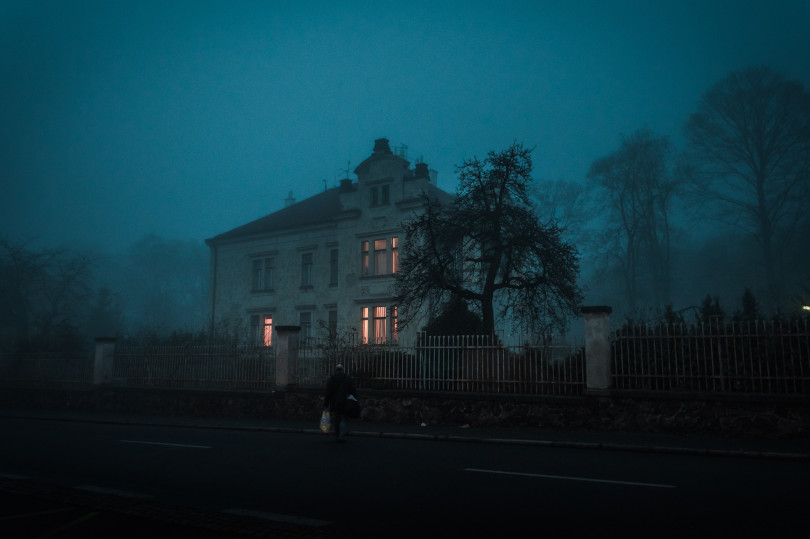As a Black Marylander, I have heard all types of stories about slaves haunting many parts of the DMV area. Maryland is technically part of the South and did participate in slavery. The stories I’ve been told were always about the restless souls of African-American slaves who didn’t make it to freedom. Their spirits were always described as vengeful, sorrowful, and depressed. I have always wondered why we pass down stories of the restless souls of African-American slaves and why we’re so drawn to the idea of vengeful slave ghosts. In honor of the spooky month of October, I want to discuss a few so-called “haunted” spots in the DMV area and how they tie to slavery.
The Halcyon House
The Halcyon House is located in Georgetown, Washington D.C. Built in 1787 by the 1st Secretary of the Navy, Benjamin Stobbert, this mansion is rumored to be one the most haunted houses in Washington D.C. because of several spirits allegedly roaming the halls.
Strobbert was one of the pallbearers at George Washington’s funeral. During the Civil War, the basement of the Halcyon House supposedly had a tunnel that was a part of the Underground Railroad because it was near the Potomac River. Rumor has it, the slaves who didn’t make it through the tunnel were captured and trapped in the basement of the Halcyon House. Legend says the screams and moans of the runaway slaves can be heard in the basement.
After Benjamin Stobbert died, the house was bought by Mark Twain’s nephew, Albert Clemens. He believed that renovating the house would bring him immortality. He started making changes to the house that were quite confusing. Clemens built many apartments in the house. There was a staircase that led to nowhere, and he refused to have electricity installed in the house. Unfortunately, Albert Clemens died in 1938 and was not granted the power of immortality. Maybe if he made better design choices to the home? Who knows.
It is rumored that the house is haunted by Benjamin Stobbert, Albert Clemens, and runaway slaves from the south who died in the basement. Allegedly, figures of a woman can be seen through windows.
The Octagon House
The Octagon House was built in 1799 and was considered one of the grandest houses in the neighborhood during its time. The first family to live in the Octagon House were the Tayloes. Designer of the home, John Tayloe III, was said to be one of the richest planters in America during his time. He had relations with George Washington, who suggested that Tayloe build a house in what’s now known as the Foggy Bottom area. The Tayloes owned hundreds of African-American slaves and a plantation. The plantation was located in Mount Airy, Virginia.
About 20 of the slaves worked in the Octagon. Visitors and researchers say that the house is haunted by African-Americans slaves who worked there. The ghosts of the slaves can be summoned by the ringing of a bell, and the slaves would ring their bells back, similar to how they were called by their masters when working.
The house served as a temporary home for President James Madison and his wife, Dolley, during the War of 1812 when the White House was burnt down and was being reconstructed.
The Yellow House
As you probably guessed so far, Washington, D.C. was a major slavery hub in the United States. It was a popular place for auctions and slave pens. Slaves from the deep south were illegally bought and kidnapped to live in slave jail pens like the Yellow House. The “house” was a jail pen while also operating as an auction house. The most famous prisoner of the Yellow House was Solomon Northup. You may recognize his name–his story was told in the movie “12 Years a Slave.” The film documented his experience in the Yellow House.
The Yellow House no longer exists. According to DCGhosts.com, “Neighbors, even after the house was torn down, and slavery abolished, often cited waking up in the middle of the night, to moans, and “god awful screams” slicing their dreams in half.”
Why We Tell Stories of Ghost Slaves
We tell stories about restless souls of slaves to continue the stories of the trauma and abuse of our ancestors. Very few people can comprehend how horrific slavery was. Through horror, we are able to pass down history. Horror, as a genre of storytelling, is not just meant to scare, but it also exposes the truth about reality. We take an element of life, and blow it up.
The ghost stories of slaves remind us that the effects of slavery are still around us and the traces of our ancestors are still alive. They built this country. The plantations are still standing, and the names of slave owners are still being kept alive. With these ghost stories, we are able to make people uncomfortable with the history of this country. These ghost stories also make people think about the lives lost in order to make this country.
Article featured photo by Ján Jakub Naništa on Unsplash.


